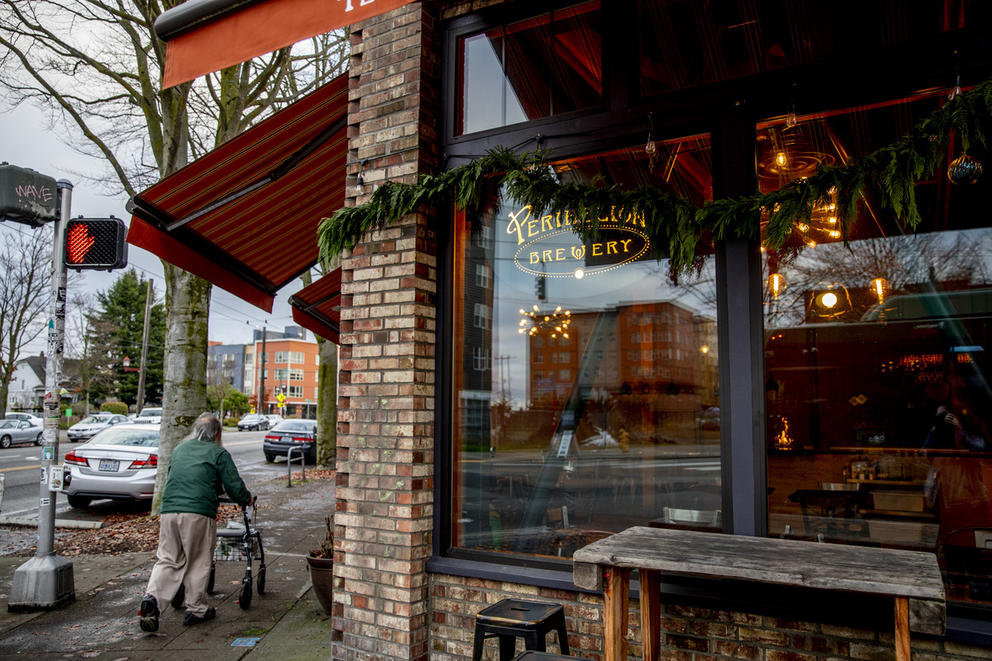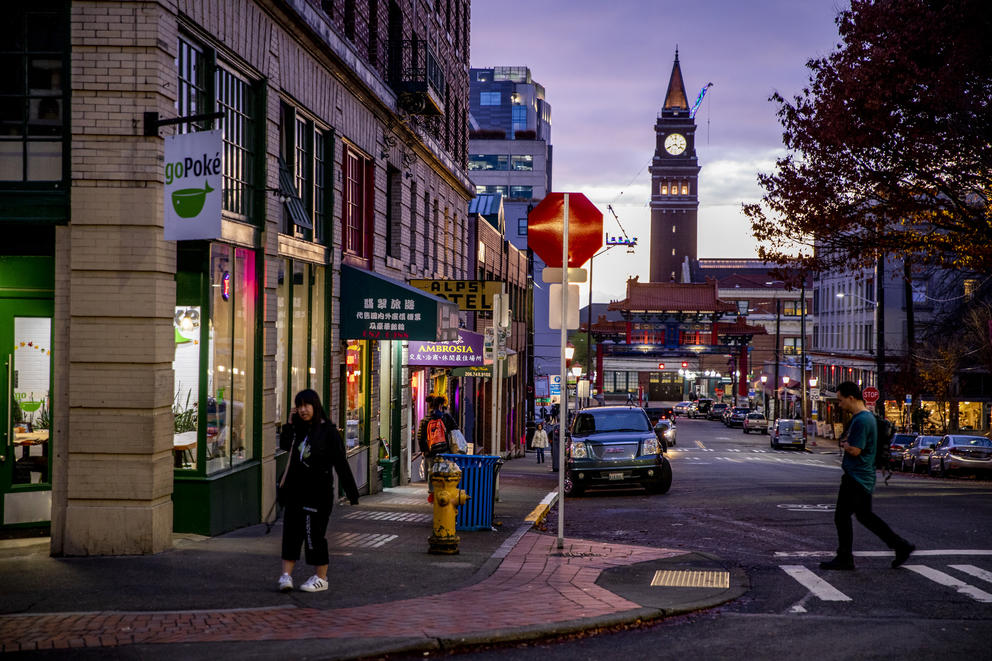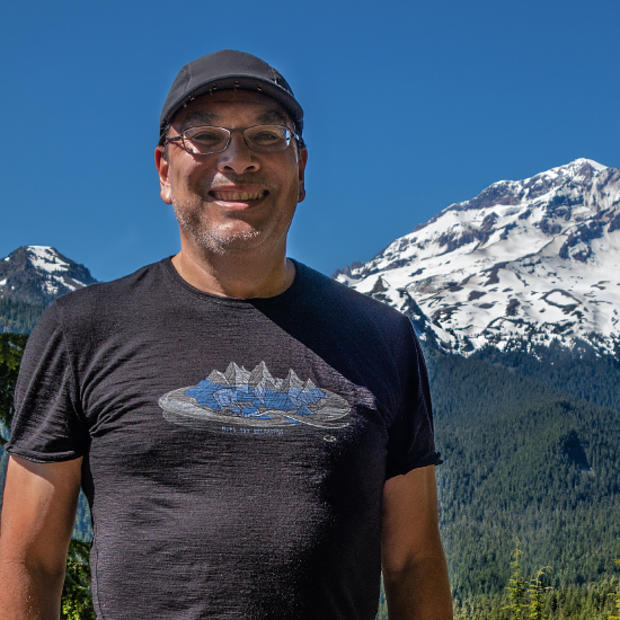Back when I was growing up, we spent a lot of time on the street behind our house on Beacon Hill. We played football, baseball and street hockey. If a car came, we moved. If there were too many cars parked on the block, we found a field. In other words, we didn’t try changing the rules or dynamics of a shared environment on our own. We made do. And in the process, we developed what we call “street smarts.” We may not have a lot of money or power, but that we have in abundance.
Nowadays, after you’ve gone all take-a-book, leave-a-book, the yellow “Houses Wanted. All Cash” signs arrive. Someone puts down traffic cones in front of their house to reserve their parking spots. Then, “Were those gunshots last night?” becomes at least a weekly chorus on NextDoor.com and neighborhood Facebook groups.
Before long, you get a Rudy’s, a pub or pizzeria or both, and a CrossFit gym. Some monthly magazine dubs your neighborhood “hip,” “hot” or “on the rise.” Next thing you know, you are the Central Area. People by habit still call you “Seattle’s traditionally Black neighborhood,” even though you flipped to a majority white residential district in 2000. Hell, even though South Seattle still is majority nonwhite, whites now are its largest racial group.
The new math of gentrification in this city has equaled massive displacement of nonwhite residents and businesses. It’s past time to change that equation.
The common denominator in this crooked calculation is white people claiming a city their forbearers fled in the ‘70s and ‘80s. And the new generation, benefiting today from the old regime, wants to live in the neighborhoods, often near revitalized downtown cores, which were segregated in the first place by redlining, discriminatory rental policies and other institutionalized tools of oppression.
Once “they” arrive, they start changing things without asking. Up go the fancy houses and the closed-off streets and the familiar national or regional chains. Then come the complaints about terrible schools, runaway crime and dirty, pothole-filled streets — in other words, all the things to which the city’s power structure turned a deaf ear when people of color complained about them for decades. Soon property values skyrocket and longtime residents can no longer afford to buy or rent or pay property taxes.
This is a country that was formed by white immigrants and “settlers” who forcibly moved and segregated Indigenous peoples, then moved them again when value — gold, carbon fuels, the opportunity for national parks — was discovered on the land to which they were moved. Does that not sound like the exact blueprint for gentrification?
‘They don’t know when to stop’
During these gentrifying times, I keep hearing in my head the last words of Baby Suggs, a character in Toni Morrison’s “Beloved”: “Those white things have taken all I had or dream, and broke my heartstrings, too. There is no bad luck in the world but white folks.”
She adds: “They don’t know when to stop.”
A lot of them don’t. Many are in perpetual justification mode for gentrifying previously nonwhite neighborhoods. Based on my lived experiences, as well as responses to columns I’ve written this summer that refer to changing neighborhoods, many white people are surprised that people of color see gentrification as a negative.
There is massive, wrongheaded conflation of “new and shiny and proven and familiar” with “improved.” According to this logic, the new Starbucks, Subway or Whole Foods brings “value” to an “underserved” neighborhood. It’s the promotion of this kind of thinking that can deeply offend a community and get a white writer’s column pulled at The Seattle Times, or what I was challenging in my own piece about an incongruent portrait of South Park.
I was with a group of protesters earlier this summer when they crashed an art-walk party thrown by Koda, which is developing the first, luxury high-rise condominiums in Chinatown-International District. The protesters were mostly young Asian Americans angry about displacement of vulnerable seniors. Police were summoned.
Afterward, one of the condo development’s marketing agents, a white woman, explained to me with utter sincerity that gentrification represented the natural order of things.
“All we want to do is bring value to an abused area,” the woman said. She went on: “At the end of the day, we don’t feel like we’re coming in and actually trying to displace anybody. I get it comes across that way. … It does change the price point from what it was to what it becomes, but that’s just the natural growth of the city. It’s going to happen at some point. All we can do is make it as easy a transition as possible.”
The marketing agent stressed that Koda worked hard to make its pricing accessible. Mind you, this is a development that is selling parking spaces for $65,000 in a neighborhood where the median annual income is $33,495.
The perverting influence of capitalism has deluded many white people into seeing themselves, their kind, or their preferences as the “value” being introduced into a gentrifying neighborhood. Eventually they want to start adding what are to them the familiar totems of place. I have traveled this country extensively and long felt large parts of it should be renamed Homogenized Milk. It’s startling how many white communities want the exact same brick-and-mortar businesses as the next.
At the other end of the spectrum is a neighborhood like Chinatown-International District that, with the late Bob Santos leading the charge, fended off in 2000 the building of a McDonald’s fast-food restaurant. Resisting such advances preserves the secret sauce of such a neighborhood: diverse, thriving, locally owned and operated businesses and services, by and for the people, the anti-Homogenized Milk.
People of color have our own cherished landmarks, valued above all else for their authenticity to our cultures and history. Those landmarks are constantly under siege because we don’t have the same access to money and power as the status quo.
The late, great Silver Fork was a popular hangout in South Seattle. Whatever small portion of its customer base that wasn’t Black was mostly Asian American. It was comfortable, familiar, a place you could get caught up over hot links and grits or a piece of pie for breakfast. Safeway replaced it in 2012 with gas pumps and a minimart.
Chinatown-International District at dusk on Nov. 19, 2019. In 2000, the neighborhood, with activist Bob Santos leading the charge, staved off of the construction of a McDonald’s. Resisting such advances preserves the secret sauce of such a neighborhood: diverse, thriving, locally owned and operated businesses and services, by and for the people, writes Glenn Nelson. (Dorothy Edwards/Crosscut)
Earlier this year, the Central Area unsuccessfully rallied to save Saba’s Ethiopian Cuisine. The restaurant had operated on 12th Avenue for nearly 20 years. Despite an effort championed by Kshama Sawant, who represents District 3 on the Seattle City Council, Saba’s was evicted by the developer who purchased its building.
So, yeah, do people of color see gentrification as a bad thing? Of course we do. To wit, Beacon Hill is where I grew up and bought my first house. My parents still live there. The north end of that neighborhood, quickly becoming majority white, is nearly unrecognizable to the place I once knew. I’m not the only one mourning the loss. Late this summer, I attended an event called “Grief: A 2019 Wail.” It was what I would call a performance workshop, staged by the wonderfully talented Jéhan Òsanyìn of Earthseed Seattle. It was attended mostly by people of color and held at Estelita’s Library on Beacon Hill. We commiserated for an evening over — wait for it — gentrification.
The road to Not-Seattle
It’s difficult to consider that gentrification has any positive connotation, particularly when British sociologist Ruth Glass coined the term in 1964 to describe the influx of the “gentry” to London’s lower-income neighborhoods. She didn’t intend it as a compliment.
“One by one, many of the working class quarters of London have been invaded by the middle classes — upper and lower,” Glass wrote. “Once this process of ‘gentrification’ starts in a district, it goes on rapidly until all or most of the original working class occupiers are displaced and the whole social character of the district is changed.”
This could have been written yesterday.
The insidious cycle of gentrification usually doesn’t work out for people of color. That’s because we start on the wrong end of the power dynamic. Place tends to be a zero-sum equation. You move in, someone has to move out. Since you’re bringing “value” to the neighborhood, pricing shifts accordingly. Since we haven’t been able to accumulate land-based wealth, people of color are the ones who typically get priced out. Because we are numeric minorities, our power base gets dispersed by displacement and we’re powerless to stem further erasure through political means. That’s how the stretch south of Seattle — from Bellevue to Renton, Kent and Federal Way — became one of the largest swaths of majority nonwhite cities in the country.
We had to go somewhere. Call it Not-Seattle.
Slowing the gentrification wheel
If we wanted to poke a stick into the spokes of the gentrifying cycle, we need to invest. And by “we,” I mean white people, who still have the power and resources in this city.
Though white liberal guilt often doesn’t go far in Seattle, there are occasional breakthroughs. The city recently agreed to sell “useless” property for nearly $300 million in otherwise going-like-gangbusters South Lake Union. Much of the compensation will come in the form of public benefits that feel like partial remedies for gentrification: 175 units of onsite affordable housing, an onsite community center, a $78 million investment in housing in communities across Seattle, and $16.7 million in transportation improvements.
Another $5 million, which seems paltry, is earmarked for the existential issue for Seattle that is not climate change: homelessness, the first cousin of gentrification.
The city’s deal only will succeed in addressing gentrification if the affordable housing does not add to the whiteness of the area, the community center is not overrun by Amazon intramural leagues, and the investments are targeted for communities feeling the impacts of powers emanating from South Lake Union and the downtown core.
Meanwhile, the gentrification wheel keeps spinning.
I am in favor of something I’ll call equity mitigation, but it needs to be narrowly focused. One possibility is using funds to relocate people in the same or adjacent neighborhood where they’re being displaced. How about extremely subsidized units in a luxury development like Koda Condominiums in Chinatown-International District? This does not attack the onset of valuation or taxation creep, but some residents at least would benefit from the neighborhood upscaling.
Actually enforcing the “mix” in mixed-use housing seems like a way to go. The city’s Mandatory Housing Affordability program is supposed to ensure that new commercial and multifamily residential developments contribute to Seattle’s inventory of affordable housing. But developers were handed a convenient out: They can pay into some black-hole fund that is supposed to turn into at least 6,000 new lower-income units in unspecified areas at some point. If there weren’t such a loophole, maybe this approach could produce results in a more timely and less convoluted way. On the other hand, I worry about the mixed-use, commercial-residential structures. Are we fostering a generation of local entrepreneurs or a wasteland of unleased, ground-floor storefronts, which already dot South Seattle? If they further devolved into unkempt eyesores, we would be defeating the purpose.
Infrastructure projects are probably better suited for equity mitigation because they improve quality of life and are better off occurring in separate places. Equity, in other words, would be reserving a modest sum — say, 5% — of any major “upgrade” in this city for mitigation in communities that do not benefit from that upgrade. Mitigation funds collected for, say, the $2 billion waterfront project that protects and enhances the value of the downtown core could take Be’er Shiva Park in Rainier Beach to its own waterfront on Lake Washington, build out bicycle lanes on Beacon Hill and pave over rocky city streets in South Park.
If it didn’t seem like such a heavy political lift, I’d advocate uncoupling project types as matches for mitigation funding. In other words, allow the waterfront project to help create affordable housing in Columbia City. The point, after all, is correcting disproportionately harmful outcomes.
The low-hanging fruit in the gentrification equation is removing obstinate, bureaucratic stasis.
Mayor Jenny Durkan could have followed a unanimous city council resolution and handed over ownership to the nonprofit operating the Central Area Senior Center. Instead, the organization had to raise funds to match a King County grant for community ownership. How about saving the hoops for the people and organizations who have the resources and time to jump through them?
Along the Duwamish River, activists dream of a place called South Park Plaza, offering affordable housing, a public gathering spot and community resources such as a kitchen. The property has been landbanked by Seattle Parks and Recreation, which mandates its land be used for parks. This renders the dream, as the activists were told, a “nonstarter.”
Seriously? Define “park.” I consider Maestas Plaza at El Centro de la Raza to be among the most soulful open spaces in the city. It’s a park by any urban standards, and not much different than South Park Plaza, which also would serve a large Latinx population.
All of the above needs to be buttressed by other measures, such as rent control. Prefabricated, modular housing also has the potential to offset one of the main barriers to affordable housing: cost of construction. This region is helping lead the way in the use of cross-laminated timber, a more eco-friendly building material.
The leverage people of color have now is our future, which in turn is informed by a past forged from the resilience of our ancestors. Seattle will not resist the rapidly changing demographics of our country, let alone our county. Soon enough, this city will be majority nonwhite and our power will grow in the meantime. It will be more fruitful to cooperate now, and nurture along the way, than decades later draining the residue of Seattle’s Homogenized Milk because it doesn’t suit the emerging population.




